20C.40.80 Required Residential Facade Modulation and Exterior Building Treatment.
20C.40.80-010 Purpose.
In order to provide architectural interest and to evoke and demonstrate a look of permanence in materials and construction, all buildings should include superior exterior cladding materials, such as brick, stone, wood shingle, copper, or similar materials. To achieve appropriate scale, proportion, and architectural detailing, all buildings shall provide a high level of architectural detailing around entries, windows, roof sections, building corners, blank walls, and separations between floors, and shall comply with the following standards. See also RCDG 20D.40.30, Building Design Standards, and RCDG 20C.40.40-030, Administrative Design Flexibility (ADF). (Ord. 2302; Ord. 1901)
20C.40.80-020 Front and Side Street Facades.
In order to provide interest and variation appropriately scaled to the building and neighborhood, facades facing streets shall be modulated approximately every 40 feet, depending on unit separation locations, building bulk, and the scale of existing and future buildings in the neighborhood. To foster a sense of permanence and long-lasting quality, facades visible from streets, parks, or other public spaces shall be clad with superior exterior cladding materials, such as brick, stone, granite, limestone, cultured stone, stucco, wood or cementatious/wood shingle or lap siding, copper or similar materials on 100 percent of the facades, excluding windows, as accepted by the Design Review Board. When these standards are inconsistent with the standards for the Old Town district, the Old Town district standards, RCDG 20D.40.150, shall apply. (Ord. 2302; Ord. 1901)
20C.40.80-030 Interior Facades.
In order to provide interest and variation appropriately scaled to the building and neighborhood, facades facing interior property lines and interior portions of the lot, that are visible from the street, shall be modulated approximately every 40 feet, depending on unit separation location, building bulk, and scale of existing and future buildings in the neighborhood. (Ord. 2302; Ord. 1901)
20C.40.80-040 Modulation Standards.
(1) Minimum depth of modulation shall be four feet.
(2) When balconies are part of the modulation and have a minimum depth of six feet and a minimum area of 60 feet, the minimum depth of modulation shall be two feet. See Figure 20C.40.80-040.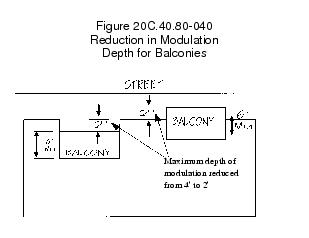
(3) The minimum width of modulation shall be five feet.
(4) The maximum width of modulation shall be 30 feet.
(5) Except for the commercial portion of mixed-use buildings with ground floor commercial space, the maximum width of a building shall generally be 120 feet and the maximum depth of a building shall be 65 percent of the lot depth, or the facade shall have major breaks in the facade plane, such as significant building modulation, and/or change of exterior material and roofline, to appear as separate buildings or wings.
(6) Facades that are all brick or masonry which have a high degree of fenestration, traditional masonry detailing, and traditional window styling, including recessed windows in the openings and use of multi-panes, as shown below, shall be exempt from these modulation requirements.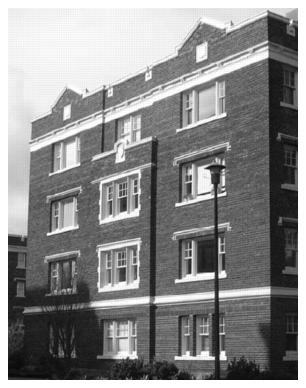
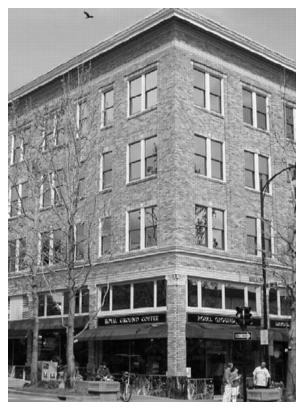
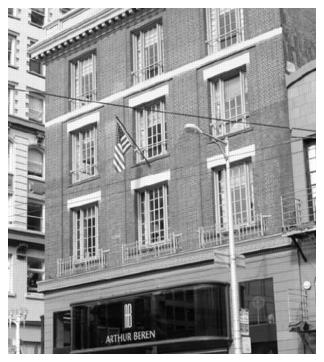
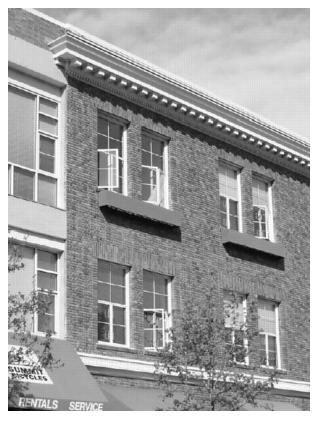
(Ord. 2302; Ord. 1901)


